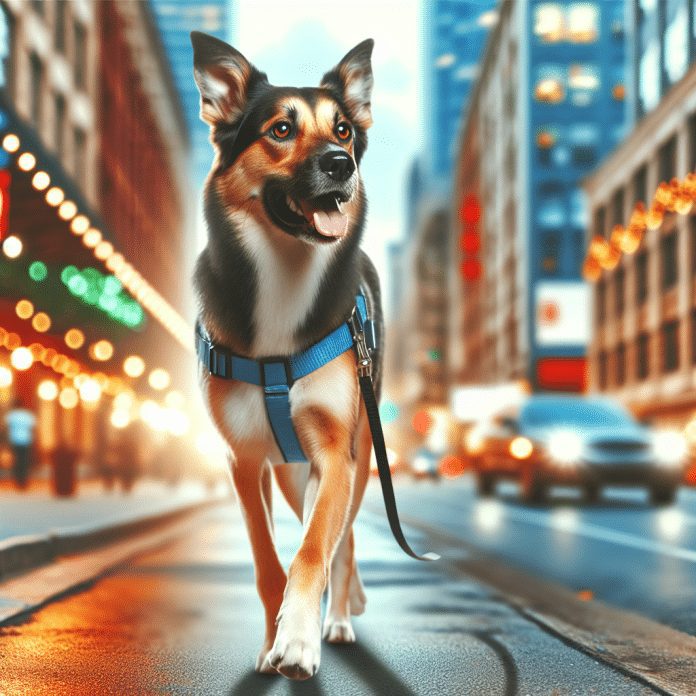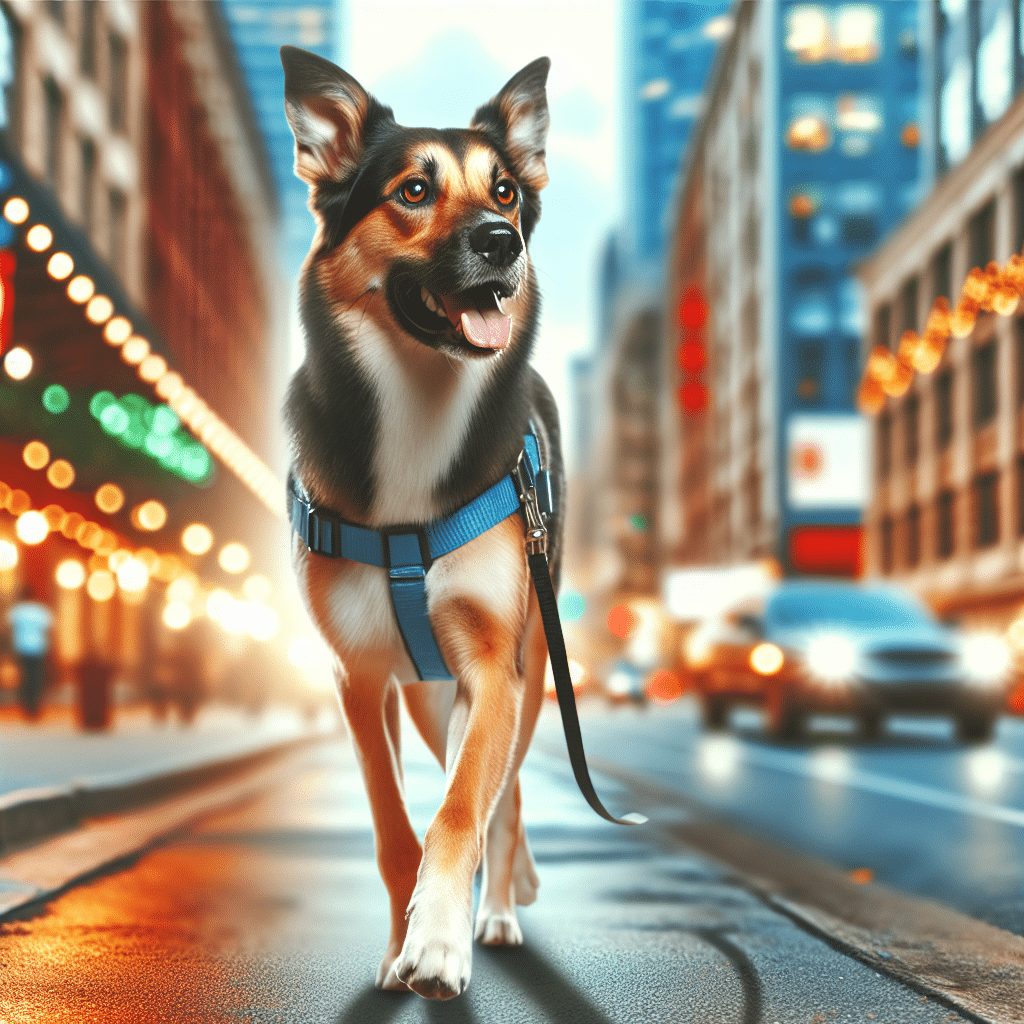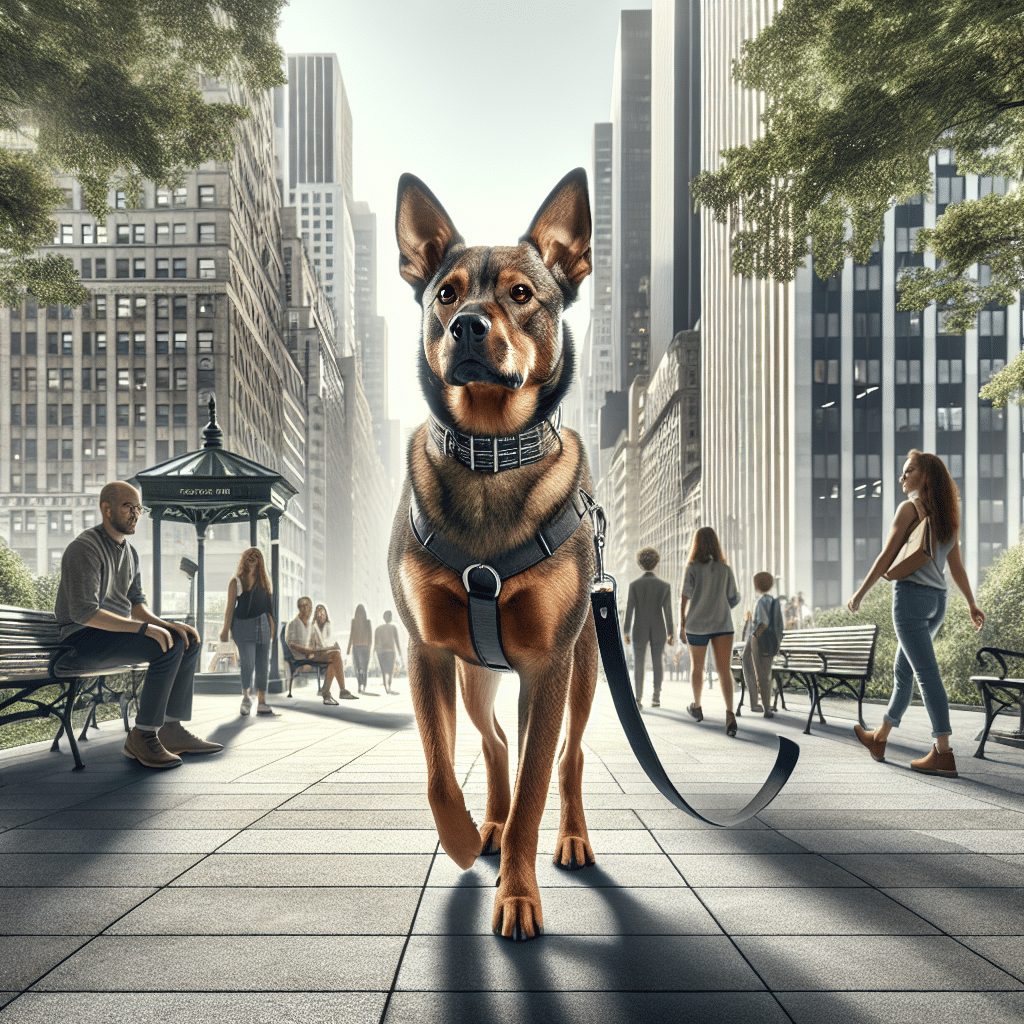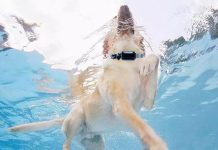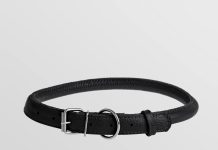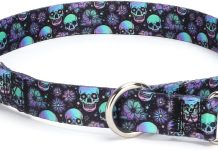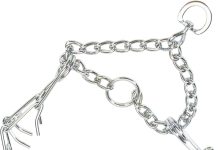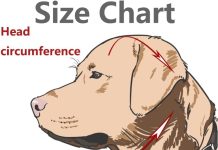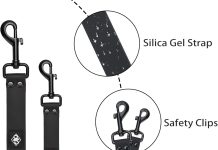Have you ever struggled with getting your dog to walk nicely in a harness? It can be quite the challenge, but fear not! In this article, we will explore some effective strategies to help you achieve a pleasant walking experience with your furry friend. From leash training techniques to positive reinforcement, you’ll soon discover the secrets to mastering the art of walking your dog comfortably and harmoniously in a harness. So, grab your leash and get ready to embark on an enjoyable journey of strolls with your four-legged companion!
Understanding the Importance of Walking Nicely in a Harness
Walking your dog can be a wonderful experience for both you and your furry friend. It not only provides exercise but also strengthens the bond between you. However, it can become rather unpleasant if your dog is constantly pulling on the leash or exhibiting unruly behavior. That’s where the importance of walking nicely in a harness comes into play.
Table of Contents
The benefits of walking nicely in a harness
Walking nicely in a harness offers numerous benefits for both you and your dog. Firstly, it ensures the safety of both you and your furry companion. With a properly fitted harness, you have more control over your dog’s movements, which can prevent accidents or injuries while out on walks. Additionally, walking nicely in a harness promotes good behavior and reinforces positive training methods.
Another benefit of walking nicely in a harness is that it reduces strain on your dog’s neck and throat. Unlike traditional collars, which can put pressure on these sensitive areas when your dog pulls, harnesses distribute the force evenly across their body. This not only prevents discomfort but also reduces the risk of neck or spinal injuries.
The potential issues with an unruly dog while walking
Walking an unruly dog can quickly turn into an ordeal. Dogs that pull excessively on the leash can put strain on your arm, causing discomfort and even pain. In addition, an unruly dog can be a danger to themselves and others. They may dart across busy roads, lunge at other dogs, or chase after squirrels, putting themselves and others at risk.
Furthermore, an unruly dog can create a stressful environment for both you and your dog. Instead of enjoying a leisurely stroll, you may find yourself constantly correcting their behavior or feeling anxious about potential incidents. This can diminish the joy of walking your dog and make it a less enjoyable experience for both of you.
Why harnesses are a popular choice for walking dogs
Harnesses have gained popularity as a preferred choice for walking dogs due to their many advantages. Unlike collars, harnesses distribute pressure more evenly across a dog’s body, reducing the risk of injury. This is particularly important for dogs with delicate throats or those prone to tracheal issues.
Another reason why harnesses are popular is that they provide better control over your dog’s movements. Harnesses allow you to guide your dog from their chest or back, giving you more leverage when redirecting their attention or correcting their behavior. Additionally, harnesses are often more comfortable for dogs, as they do not constrict their airways or put pressure on their necks.
Moreover, harnesses come in a wide variety of styles and designs to suit every dog’s needs. From step-in harnesses to vest-style harnesses, there are options available for dogs of all sizes and breeds. With the right harness, you can ensure a comfortable fit for your furry companion and minimize any discomfort they may experience.
Choosing the Right Harness
When it comes to choosing the right harness for your dog, there are a few factors to consider.
Types of harnesses available
There are several types of harnesses available, each with its own unique features. Step-in harnesses are designed to be easy to put on and take off, making them a popular choice for small or less cooperative dogs. Vest-style harnesses provide more support for dogs with neck or back issues and distribute pressure evenly across their body. Additionally, head halter harnesses can be effective for dogs who require extra control while walking.
Consideration for the dog’s size and breed
It’s essential to take your dog’s size and breed into account when selecting a harness. Different breeds have different body shapes and proportions, so choosing a harness that fits your dog’s specific physique is crucial. Adjustable harnesses allow for a more customized fit, ensuring both comfort and security during walks. It’s also important to consider the strength and energy level of your dog, as certain breeds may require a more robust and secure harness.
Proper fitting and adjustments
Once you have chosen a suitable harness, it’s important to ensure that it fits correctly. A well-fitted harness should be snug but not tight, allowing for comfortable movement without causing any chafing or rubbing. To determine the correct size, measure your dog’s chest girth and neck circumference, following the manufacturer’s guidelines. Most harnesses come with adjustable straps, allowing you to make fine adjustments to achieve the perfect fit for your dog.
Introducing the Harness to Your Dog
Introducing a harness to your dog should be a gradual and positive experience.
Gradual introduction process
To help your dog become comfortable with wearing a harness, introduce it in a gradual and patient manner. Start by leaving the harness near your dog’s bed or food bowl so they can get accustomed to its presence. Then, allow them to sniff and investigate it without any pressure to wear it. Gradually progress to touching their body with the harness and rewarding them for remaining calm and relaxed.
Positive reinforcement techniques
Positive reinforcement is an effective training method that can be applied when introducing a harness to your dog. Reward them with treats, praise, or toys for any calm or positive behavior around the harness. Associate the presence of the harness with positive experiences, creating a positive association. This will help your dog develop a positive attitude towards the harness and make the process of putting it on easier.
Associating the harness with positive experiences
Make the process of putting on the harness a positive and enjoyable experience for your dog. Offer treats or engage in a favorite activity while putting on the harness, ensuring that they associate it with positive and pleasant experiences. By doing so, your dog will gradually develop a positive association with the harness and be more willing to wear it willingly.
Basic Training Commands
Basic training commands are fundamental to teaching your dog good behavior on walks.
Teaching your dog to ‘sit’ and ‘stay’
‘Sit’ and ‘stay’ are two essential commands that can help control your dog’s behavior during walks. Start by patiently teaching your dog to sit on command, rewarding them with treats and praise when they comply. Similarly, teach them to stay in place until given permission to move. These commands will help create a strong foundation for walking nicely in a harness.
Using treats and rewards effectively
Treats and rewards are powerful motivators when it comes to training your dog. Use small, tasty treats to reinforce positive behavior during walks. Reward them for walking nicely without pulling on the leash, keeping a loose leash, or responding to your cues. Be consistent in your reward system, and gradually reduce the frequency of treats as your dog becomes more accustomed to appropriate walking behavior.
Building a strong foundation for walking nicely
Building a strong foundation for walking nicely in a harness requires consistency and repetition. Practice basic training commands in different environments, gradually increasing distractions to ensure that your dog can remain focused on you even in challenging situations. Through consistent training and positive reinforcement, you can reinforce good behavior and set the stage for enjoyable walks.
Walking Techniques to Encourage Good Behavior
Encouraging good behavior during walks involves implementing effective walking techniques.
The importance of a loose leash
Walking with a loose leash is crucial when it comes to encouraging good behavior. A loose leash allows your dog to explore their surroundings while still maintaining their focus on you. Avoid tension on the leash and ensure that your dog understands that pulling will not move them forward. Stop and wait for them to release tension on the leash before proceeding, rewarding them for walking with a loose leash.
Using verbal cues and hand signals
Verbal cues and hand signals can be effective tools for guiding your dog’s behavior while walking. Use simple and consistent commands such as “heel” or “let’s go” to signal your expectations. Accompany these commands with corresponding hand signals to reinforce their meaning. With practice, your dog will learn to associate the cues with the desired behavior, facilitating better communication during walks.
Maintaining a steady pace
Maintaining a steady pace during walks can help your dog focus and discourage pulling or zigzagging. Set a consistent pace that your dog can comfortably keep up with, and avoid sudden changes in direction or speed. By maintaining a steady rhythm, your dog will be less likely to become overexcited or distracted, promoting a calmer walking experience.
Addressing Pulling and Leash Reactivity
Pulling and leash reactivity can be challenging issues to tackle, but with patience and training, they can be overcome.
Identifying triggers and working on desensitization
First, it’s important to identify what triggers your dog’s pulling or leash reactivity. This could be other dogs, unfamiliar noises, or exciting stimuli in the environment. Once you have identified the triggers, work on desensitizing your dog to these situations. Gradually expose them to the triggers at a safe distance and reward calm behavior, gradually decreasing the distance over time. This process helps your dog associate the trigger with positive experiences and reduces their reactivity.
Engaging in frequent stops and changes of direction
Another effective technique to address pulling is to engage in frequent stops and changes of direction during walks. Whenever your dog starts to pull, immediately stop walking and stand still. Remain in place until they release tension on the leash and then continue walking. Similarly, change direction randomly during walks to keep your dog attentive and responsive to your movements. These techniques teach your dog that pulling results in a disruption of their preferred walking pace.
Teaching ‘leave it’ and ‘heel’ commands
Training your dog to respond to “leave it” and “heel” commands is essential for addressing pulling and leash reactivity. The “leave it” command teaches your dog to ignore distractions or objects they may fixate on during walks. The “heel” command instructs your dog to walk calmly beside you without pulling or forging ahead. Consistently practice and reward these commands to reinforce good walking behavior and discourage undesirable pulling or reactivity.
Troubleshooting Common Issues
While walking your dog nicely in a harness is the goal, it’s common to encounter a few challenges along the way.
Dealing with distractions during walks
Distractions are a common occurrence during walks and can disrupt your dog’s focus and behavior. If your dog becomes fixated on a distraction, redirect their attention back to you using verbal cues or treats. Practice in different environments with increasing levels of distractions to help your dog develop resilience and focus despite the stimuli around them.
Handling nervous or fearful behavior
Some dogs may exhibit nervous or fearful behavior during walks, which can make it challenging for them to walk nicely in a harness. In such cases, it’s important to create a calm and positive environment for your dog. Provide reassurance and reward them for any calm or confident behavior they display. Gradually expose them to new environments or situations that trigger their fear, always at a pace they are comfortable with.
Addressing aggression or leash reactivity
Aggression or leash reactivity can be challenging issues that require special attention and professional guidance. If your dog displays aggressive behavior towards people or other dogs while on walks, it’s crucial to seek help from a professional dog trainer or behaviorist. They can provide you with personalized strategies and techniques to address the underlying causes of aggression and make walks safer and more enjoyable for both you and your dog.
Consistency and Persistence
Consistency and persistence are key elements when it comes to training your dog to walk nicely in a harness.
Establishing a daily walking routine
Establishing a daily walking routine helps create a sense of structure and consistency for your dog. Set aside specific times for walks that work well for both you and your dog. Consistency in the timing, duration, and frequency of walks helps reinforce good behavior, reinforces the training commands, and provides mental and physical stimulation for your dog.
Practicing training exercises regularly
Regularly practicing training exercises is essential for ensuring that your dog retains and improves their walking skills. Devote time to reinforce basic commands, walking techniques, and responding to distractions. Incorporating short training sessions into your daily walks can help reinforce positive behavior and encourage ongoing improvement.
Being patient and persistent throughout the process
Training your dog to walk nicely in a harness takes time and patience. Understand that progress may be gradual and setbacks may occur along the way. Be patient with your furry friend and remain persistent in your training efforts. Celebrate even small successes and always focus on positive reinforcement to maintain a positive learning experience for your dog.
Seeking Professional Help
In some cases, seeking professional help is necessary to address specific challenges or behavior issues.
Knowing when to consult a professional dog trainer
If you are finding it difficult to address certain behaviors, such as severe pulling, leash reactivity, or aggression, it may be time to consult a professional dog trainer. Professional trainers have the knowledge, experience, and tools to assess your dog’s behavior and develop a customized training plan to address their specific needs.
Finding a reputable trainer or behaviorist
When searching for a professional dog trainer or behaviorist, it’s important to find a reputable individual or organization. Look for trainers who have a positive, force-free approach to training, and consider reading reviews or asking for recommendations from trusted sources. A skilled and experienced trainer can make a significant difference in helping you and your dog overcome any challenges you may be facing.
Getting personalized assistance for your dog’s specific needs
One of the benefits of seeking professional help is the personalized assistance provided for your dog’s specific needs. A professional trainer or behaviorist can assess your dog’s behavior, identify the underlying causes of any issues, and develop a tailored training plan to address those concerns. They can provide guidance, support, and resources that are tailored to your dog’s individual personality, breed, and circumstances.
Conclusion
Walking your dog nicely in a harness is an achievable goal that requires time, patience, and consistent training. By understanding the importance of walking nicely in a harness, selecting the right harness, introducing it gradually, and implementing basic training commands, you can establish a strong foundation for good walking behavior. By using effective walking techniques, addressing pulling and leash reactivity, and troubleshooting common issues, you can overcome challenges and enjoy pleasant walks with your furry companion. Remember to be persistent, seek professional help when needed, and celebrate the progress and achievements your dog makes along the way. With dedication and positive reinforcement, you can create an enjoyable and harmonious walking experience for both you and your dog.

